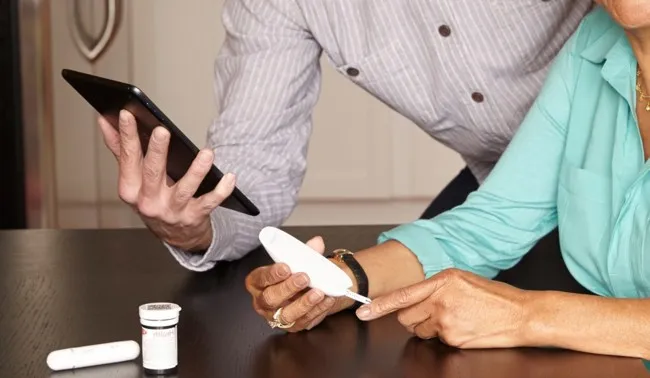Smart mobile phones have become inseparable companions that always keep us communicated with our social environment but can also help us improve and control different aspects of our daily health.
They are powerful instruments capable of complementing some medical tools to make life easier for millions of patients with chronic ailments and one of the clearest examples is diabetes, where multiple efforts have been focused on recent years.
A distance glucometer
The first bets that reached the market with the intention of improving the assistance of diabetic patients using smart mobile terminals dateMedical care.

It was a compact plus Accouchek glycometer that communicated with a Nokia 6600 terminal through an infrared port, sent the information about the patient's blood and mobile blood glucose, in turn, he renounced it to a doctor throughA GPRS connection.
Subsequently, different systems have been leaving that with greater or lesser success they have tried to make the mobile into a kind of data transmitter to hospitals or medical consultations, although the true impulse has been given by the applications and quantification systems adapted to the surveillance of thediabetes.
quantifying your glucose level
As the power of mobiles grew, they were no longer considered as simple means to get the information to the doctor, but rather began to assess their usefulness as information registrars and to show data to users in a simple way anduseful.

A sample of this is the enormous growth in the number of applications that have reached the stores of the different platforms and that try to improve our disease control.You just have to look for "diabetes" in the store and we will have hundreds of quantifying apps before us.
However, the true utility comes when this ability to register information is combined with the appearance of different glucometers that connect to the mobile, they send the data and subsequently analyze them, check statistically, store them, show graphically and in casethat there is some anomaly indicates it and warn the patient.
It is for example the case of Ibgstar glucometers, a blood glucose meter accessory that, apart from helping to have diabetes under control, allows registration, addition of notes, follow -up and history management, printing the data and sharing themWith the doctor.Or also that of the IHealth monitors with iPhone app that synchronizes with the telephone wirelessly and allows a rigorous record of glucose, weight and the consequences of the patient's feeding.
Prevent better than healing
Prevention is also a key section that has been in the researchers' minds in the last decade.Beyond preventing a possible anomaly in the glucose levels of a patient already diagnosed, some efforts are focusing on the early diagnosis of the disease and taking it to remote places without other technical means.
That is, the smartphone is being treated as a powerful computer system that with the help of external sensors is able to diagnose diabetes without the need for more medical instruments.An example came from the hand of Hanover Center for OpticalTechnologies, where they are developing a system that would carry the SPR (Surface Plasmon Resonance) technique to the mobile to know the biocomposition of liquid samples.
Another is found in Scanadu, a multidiagnosis system that through a reactive strip analyzes the colors and indicates the composition of our urine as well as glucose levels, proteins, bilirubin, acetone, etc., alerting in case of anomalies.
less punctures and better control
Despite the clear advantages of this type of systems, its future does not go through the specific measurement of the Glusoca one or several times a day, but by a more permanent control without the need to obtain a blood sample in each process.

The first interesting steps in this regard arrived a decade ago with the appearance of patches with ianlambric chips in embedded RFID that communicated with the mobile every temporary period, detecting the patient's glucose level.
Subsequently, multiple solutions have been leaving, such as the recent Dexcom G5, a system approved by the American FDA for use in that country that uses our mobile as a graphical interface and as a processing and communications system to constantly monitor the user glucose levels andTransmit them to the smartphone through a Bluetooth link.
For this it is necessary to install an application on the phone and place the sensor on the patient's skin.The data on glucose levels are continually sent (every 5 minutes) to the mobile where we can see them in the form of graphs, statistics and know how they are evolving throughout the day, food after food.
Laser reader
And for those who do not want patches, new reliable measurement systems are also being developed based on laser reading.The last invention came to us a few months ago by the University of Leeds, where they have created a device that uses a low power laser to measure blood glucose levels without penetrating the skin.

The idea is that shortly this system can be incorporated into different quantifiers that will send the data to the mobile wirelessly.



